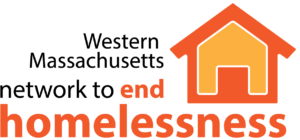Present: Jeffrey Langlois (Providence Ministries), Lizzy Ortiz (City of Springfield), Patricia McDonnell (SMOC), Dave Modzelewski (Network), Jay Levy (Eliot CHS), Peg Keller (City of Northamoton), Dave Christopolis (Hilltown CDC), Charlie Knight (Rainville, post consumer), Hwei-Ling Greeney (Amherst Community Connections), Claudia Phillips (Health Care for the Homeless), Steve Connor (Central Hampshire Vets Services), Gerry McCafferty (City of Springfield).
VI-SPDAT Pilot Report
The meeting started with a report from providers piloting the VI-SPDAT. CoCs are required to select a tool to use for coordinated assessment, and the CoCs have focused on the VI-SPDAT as what appears to be the most commonly used tool across the country. In the past month, both Eliot CHS and Friends of the Homeless have experimented with using the tool.
Jay Levy reported that Eliot has used the tool with 6 people, each of whom are connected to Eliot’s street outreach team. Overall, the tool confirmed what the workers had believed about these individuals–that they were vulnerable people in need of permanent supportive housing. They believe that for most folks, the tool will work and provide good information
Jay and his team talked broadly about the tool and raised a few issues:
- There are some vulnerable homeless people for whom the tool will not work–people with limited verbal interaction, people with severe paranoia who will not answer questions, people who cannot get through the survey due to lack of ability to concentrate or other issues. For these folks, there needs to be a way for workers to identify people as needing PSH, even if we cannot get a VI-SPDAT score.
- His staff used it as a survey, and relied upon answers provided by the person being interviewed, except for the few questions where the tool specifically prompts the interviewer to add his or her own observations. In some cases, the worker knew the answer provided was incorrect. We need to make a common determination (or seek guidance) about augmenting the survey through case worker knowledge or observation. Particularly in our area, we know a lot about people who have experienced long-term homelessness–can/should we use that knowledge?
- We have a number of providers serving people while they are homeless, which improves behaviors/outcomes for these individuals. This makes people’s scores decrease, but the scores would go right back up again if the services were removed. This means that some may score too low for PSH, even though, without services, they would otherwise qualify. The result may be some very vulnerable people who do not score high.
FOH has used the tool with 30-35 people. FOH staff were unable to attend today’s meeting, but provided the following written summary of their experience:
Sample scoring results:
- 25% scored below 5
- 50% scored between 5-9 (recommended for rapid rehousing)
- 25% scored 10 or above (recommended for permanent supportive housing)
Of those who scored in RR range:
- Half those that were assessed in FOH sample scored between 5-9, recommended for RR.
- Staff agreed with this score and felt they would be able to plug those who score in this range into RR if the client has income (criteria for RR).
- Of those who scored in the RR range, 78% had income but those who had income included EAEDC income only which means RR is not feasible without subsidized housing.
- This means half who scored in the RR range seem to have adequate income to be housed (the actual income barrier could be greater, I just eliminated the EAEDC from the equation), or 25% of the total sample.
- Income sources for RR range included no income, EAEDC, SSDI, SSI, UI and employment.
Overall CM felt this was a good tool.
- Average time 10 minutes to complete in the interview style with clients.
- Staff observation piece is beneficial because CM staff found clients provided false information to questions regarding substance abuse, MH and wellness.
- CM questioned wording on questions 17, 35, 37 and 49 suggesting it be simpler.
- In particular CM found clients having difficulty understanding questions 17 and 49, 35 repeats itself and 37 the word “shots” is not needed since it already asks if they have injected a drug.
Next Steps on the VI-SPDAT
The group discussed the fact that CoCs are required to have a common assessment tool, and that the question at this point is whether we think this should be the tool or whether we want to look at any other tools. In addition, given issues raised, there would be the question as to whether the tool is adopted as is, or whether any modifications be made.
Steve Connor noted that, statewide, the veteran system is considering the use of the VI-SPDAT for screening. There is no active consideration of any other tool.
Dave Christopolis said that he will promote the tool with the Three-County CoC providers, and that he expects they will begin using it in the fall. Gerry McCafferty asked the committee to make a recommendation regarding the tool to the Hampden County CoC Board of Directors. Committee members indicate that their recommendation is that the CoC begin using the VI-SPDAT.
Hwei-Ling Greeney asked how the tool will be used, and what will happen with the information collected in the tool. Gerry explained that at this point, the CoCs were looking at the tool as a required screening necessary for CoC-funded permanent supportive housing (PSH) units. PSH providers would be required to verify that a person’s score met a minimum level in order to be eligible for the housing. The tool can be used more broadly, but this is the first step the CoCs are taking. Dave C. added that even though there would generally be a requirement to prioritize a certain minimum score, there is no intention to leave beds vacant–if there is no one that meets the minimum score, the unit would go to a person with the next-highest priority. Hwei-Ling asked about the tool’s applicability to other programs, and whether it would be helpful for programs to use to decide who to serve, Gerry explained that the purpose of the tool is, in part, to determine the level of service needs for a particular person, so that the person can be matched with the level of support they need. This could be used and could be beneficial for any housing program targeted to homeless persons.
The committee talked about modifications to the tool, and expressed concern about not being able to test modifications to be sure they still led to accurate results. There was agreement that the issue is not the tool in its current form but the ability to override the tool in some circumstances.
HUD Guidance re Prioritization and Centralized Waitlists
Gerry provided a brief summary of the recent HUD notice on prioritization of persons for CoC-funded permanent supportive housing. The notice strongly recommends that CoCs establish a priority process that works to house people in this order: 1) Chronically homeless with at least a full year of homelessness and with the most severe service needs; 2) Chronically homeless with at least a full year of homelessness but not the most severe service needs; 3) Chronically homeless with less than a year of homeless (i.e., episodically homeless) and with the most severe service needs; and 4) All other chronically homeless. This type of ranking will be based upon use of the coordinated assessment tool the CoC chooses to use. To implement this type of prioritization, HUD recommends use of a centralized wait list for PSH units.
Zero: 2016
Gerry also mentioned the Zero: 2016 campaign, which is the follow-up to the 100,000 Homes campaign. The Zero: 2016 Campaign sets CoC goals and targets for ending veteran homelessness by Dec. 31, 2015, and ending chronic homelessness by December 31, 2016. Gerry noted that she thinks the Hampden County CoC will be able to meet this goal and that she will ask the Hampden County CoC Board at its September meeting to agree to participation. Hwei-Ling asked Dave C. if the Three-County CoC will join the campaign. Dave said he’s interested, but he cannot make it happen–it is dependent upon committed people and agencies coming together to do it.
Upcoming Events
- Ending veteran homelessness event – for service providers, Sept. 18, 2014, 9 am-4 pm, Holyoke Soldiers Home
- Housing First Training, Oct. 16, 2014, 9 am-4 pm, Holyoke Community College
Next Meeting
September 4, 2014, 10:30 am-noon, Friends of the Homeless, Springfield

